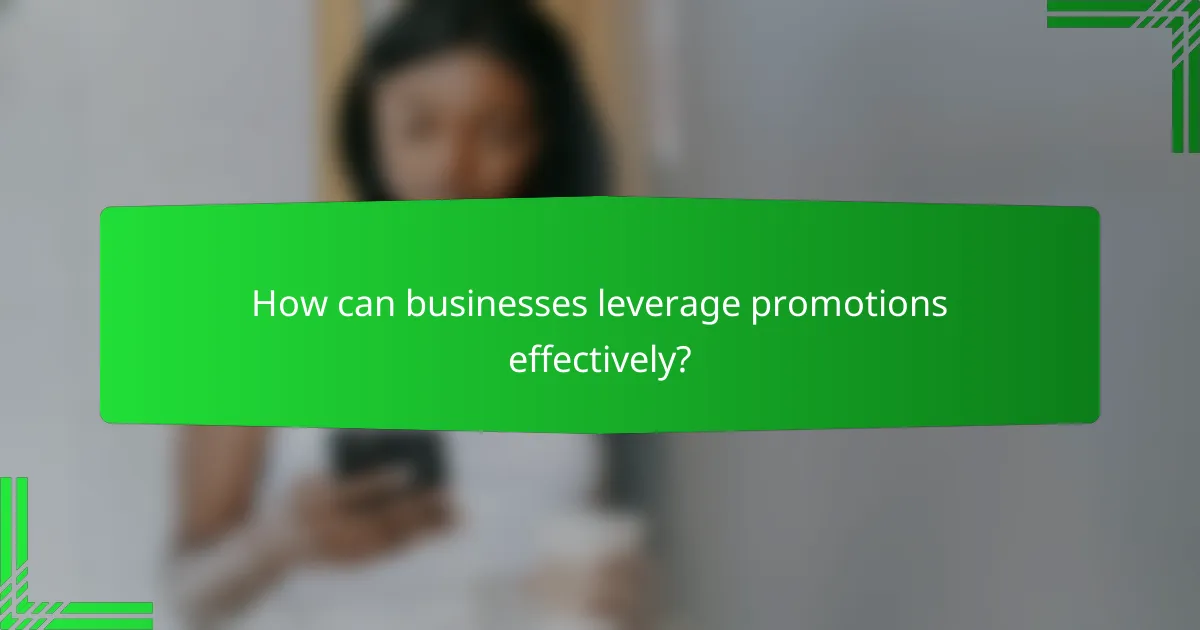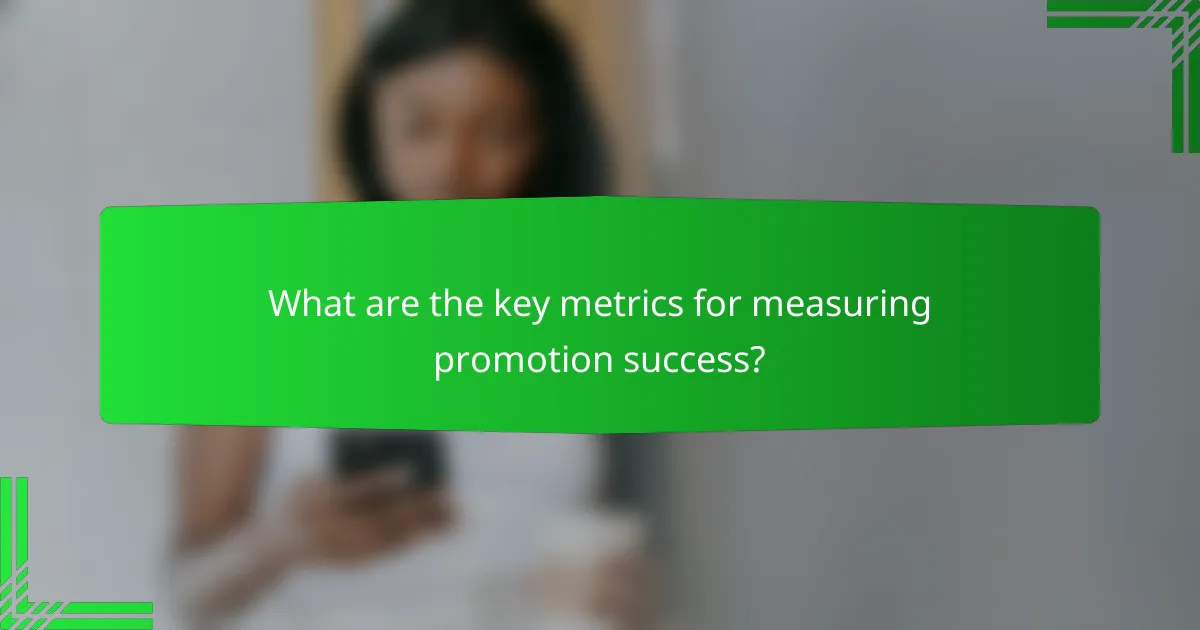Discounts and promotions play a crucial role in attracting customers and driving sales for businesses. By employing effective strategies such as tiered pricing, seasonal offers, and referral discounts, companies can enhance customer engagement while maximizing their revenue potential. Understanding customer preferences and utilizing targeted promotions can further amplify the effectiveness of these offers, making them more appealing and impactful.

What are the best discount strategies for SaaS tools?
The best discount strategies for SaaS tools include tiered pricing models, seasonal promotions, referral discounts, bundled offers, and free trials. Each strategy can effectively attract customers while maximizing revenue, depending on the target market and product type.
Tiered pricing models
Tiered pricing models allow SaaS providers to offer different pricing levels based on features or usage limits. This approach caters to various customer segments, from startups to large enterprises, enabling them to choose a plan that fits their needs and budget.
For example, a company might offer a basic plan at $10 per month, a standard plan at $25, and a premium plan at $50. This structure encourages customers to upgrade for additional features, potentially increasing overall revenue.
Seasonal promotions
Seasonal promotions leverage specific times of the year, such as holidays or back-to-school seasons, to offer discounts. These promotions can create urgency and attract new customers looking for deals during these periods.
For instance, a SaaS company might offer a 20% discount for new sign-ups during Black Friday. This strategy can significantly boost sales during peak shopping times, but it requires careful planning to ensure the promotion aligns with the company’s overall marketing strategy.
Referral discounts
Referral discounts incentivize existing customers to refer new users by offering them a discount on their subscription. This strategy not only rewards loyal customers but also helps to expand the customer base through word-of-mouth marketing.
A common approach is to provide a 10% discount for both the referrer and the new customer upon sign-up. This creates a win-win situation and can lead to increased customer acquisition without substantial marketing costs.
Bundled offers
Bundled offers combine multiple products or services at a reduced price, encouraging customers to purchase more than one item. This strategy can enhance perceived value and increase average transaction sizes.
For example, a SaaS provider might bundle a project management tool with a time-tracking application for a single price of $30 per month instead of $40 if purchased separately. Bundling can be particularly effective for complementary products, enhancing customer satisfaction.
Free trials
Free trials allow potential customers to use a SaaS product for a limited time without any cost. This strategy helps users experience the product’s value before committing to a subscription, reducing the perceived risk of purchase.
Typically, free trials last from 14 to 30 days, giving users ample time to explore features. However, it’s essential to follow up with trial users to convert them into paying customers, often through targeted emails or special offers as the trial period ends.

How can businesses leverage promotions effectively?
Businesses can leverage promotions effectively by implementing targeted strategies that resonate with their audience. This involves understanding customer preferences and utilizing various channels to maximize reach and engagement.
Targeted email campaigns
Targeted email campaigns are a powerful way to reach specific segments of your customer base. By analyzing customer data, businesses can tailor their messages to address the interests and needs of different groups, increasing the likelihood of conversion.
Consider segmenting your email list based on factors such as purchase history or engagement levels. For instance, offering exclusive discounts to loyal customers can enhance retention and encourage repeat purchases.
Social media advertising
Social media advertising allows businesses to target specific demographics and interests, making it an effective promotional tool. Platforms like Facebook and Instagram offer robust targeting options that enable businesses to reach potential customers based on their behavior and preferences.
Utilizing eye-catching visuals and clear calls-to-action can significantly improve engagement rates. Businesses should regularly analyze the performance of their ads to optimize campaigns and allocate budgets effectively.
Influencer partnerships
Influencer partnerships can amplify promotional efforts by leveraging the trust and reach of established figures in specific niches. Collaborating with influencers who align with your brand values can enhance credibility and attract new customers.
When selecting influencers, consider their audience demographics and engagement rates. A well-chosen partnership can lead to increased brand awareness and sales, especially if the influencer shares authentic content that resonates with their followers.

What types of discounts are most appealing to customers?
Customers are often drawn to discounts that provide clear and tangible savings. Among the various types, percentage-off discounts, cashback offers, and limited-time promotions tend to be the most attractive, as they create a sense of urgency and value.
Percentage-off discounts
Percentage-off discounts reduce the price of a product or service by a specific percentage, making them straightforward and appealing. Commonly seen as 10%, 20%, or even 50% off, these discounts can significantly influence purchasing decisions, especially during sales events.
When using percentage-off discounts, consider the original price to ensure the discount feels substantial. For example, a 20% discount on a $100 item saves $20, making it more enticing than a smaller percentage on a higher-priced item.
Cashback offers
Cashback offers provide customers with a percentage of their purchase back, either as cash or store credit. This type of discount is popular among consumers who appreciate receiving money back after spending, creating a rewarding shopping experience.
To maximize the effectiveness of cashback offers, businesses should clearly communicate the terms, such as the percentage returned and any minimum purchase requirements. For instance, a 5% cashback on a $200 purchase gives the customer $10 back, which can encourage repeat business.
Limited-time offers
Limited-time offers create urgency by providing discounts that are available for a short period. These promotions can drive immediate sales as customers rush to take advantage of the deal before it expires.
When implementing limited-time offers, it’s essential to promote them effectively through various channels, such as email, social media, and in-store signage. A common strategy is to use countdown timers to emphasize the urgency, encouraging customers to make quicker purchasing decisions.

What are the key metrics for measuring promotion success?
Key metrics for measuring promotion success include conversion rates, customer acquisition cost, and return on investment. These metrics help businesses evaluate the effectiveness of their promotional strategies and make informed decisions for future campaigns.
Conversion rates
Conversion rates indicate the percentage of customers who take a desired action, such as making a purchase after engaging with a promotion. A higher conversion rate typically signifies a successful promotion. Businesses should aim for conversion rates that reflect industry standards, often ranging from 1% to 5% for online sales.
To improve conversion rates, consider A/B testing different promotional messages or offers. Analyze customer behavior to identify which promotions resonate most effectively with your target audience.
Customer acquisition cost
Customer acquisition cost (CAC) measures the total cost of acquiring a new customer, including marketing expenses and promotional offers. Understanding CAC is crucial for assessing the efficiency of promotional strategies. A lower CAC indicates a more effective promotion.
To calculate CAC, divide total marketing expenses by the number of new customers acquired during a specific period. Aim for a CAC that is significantly lower than the lifetime value of a customer to ensure profitability.
Return on investment
Return on investment (ROI) evaluates the profitability of a promotion by comparing the net profit generated to the costs incurred. A positive ROI indicates that the promotion was financially successful. Businesses should strive for an ROI that exceeds industry benchmarks, often aiming for at least a 20% return.
To calculate ROI, use the formula: (Net Profit / Cost of Promotion) x 100. Regularly review and adjust promotional strategies based on ROI findings to maximize future campaign effectiveness.

What are the prerequisites for implementing discount strategies?
Implementing discount strategies requires a clear understanding of your business goals, customer demographics, and market conditions. Key prerequisites include a well-defined pricing strategy, robust data analytics capabilities, and a solid grasp of your profit margins.
Understanding your target audience
Knowing your target audience is crucial for effective discount strategies. Analyze customer demographics, preferences, and purchasing behaviors to tailor discounts that resonate with them. For instance, younger consumers may respond better to social media promotions, while older demographics might prefer email offers.
Setting clear objectives
Establish clear objectives for your discount strategies, such as increasing sales volume, clearing inventory, or attracting new customers. Each objective may require different types of discounts, such as percentage-off promotions for new customers or buy-one-get-one offers to move excess stock.
Analyzing competitors
Conduct a thorough analysis of your competitors’ discount strategies. Understanding their pricing and promotional tactics can help you identify gaps in the market and opportunities for differentiation. For example, if competitors frequently offer seasonal discounts, consider unique promotions that align with your brand identity.
Evaluating profit margins
Before implementing discounts, evaluate your profit margins to ensure sustainability. Calculate how much of a discount you can afford without compromising profitability. A common approach is to ensure that the discounted price still covers costs and maintains a reasonable profit margin, typically around 20-30% for retail businesses.
Choosing the right discount type
Select the most effective type of discount based on your objectives and audience. Options include percentage discounts, fixed-amount reductions, or bundled offers. For example, a 20% discount might attract price-sensitive customers, while a bundled offer can increase average order value.
